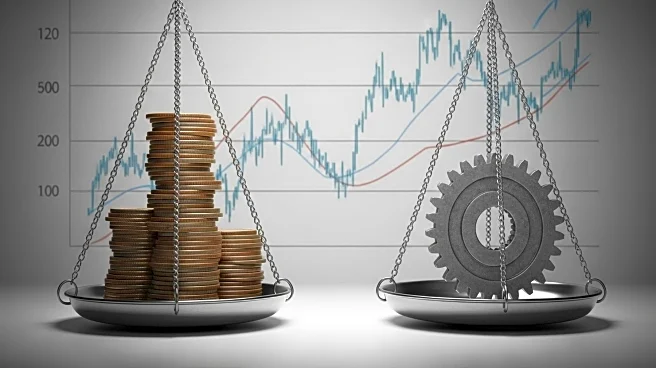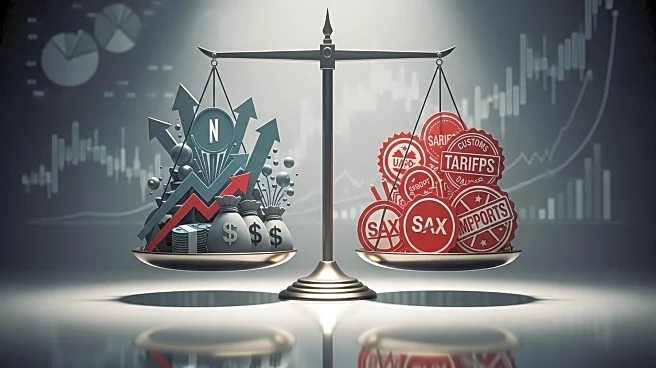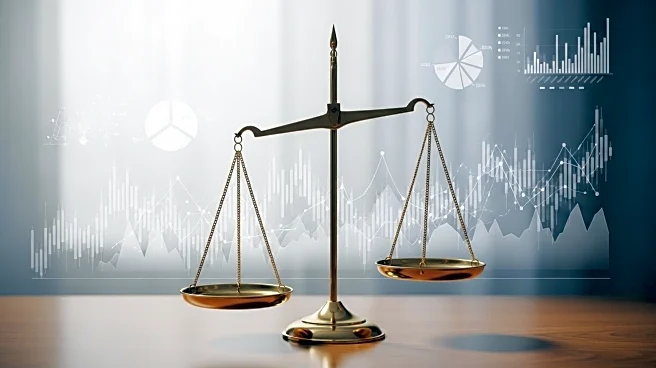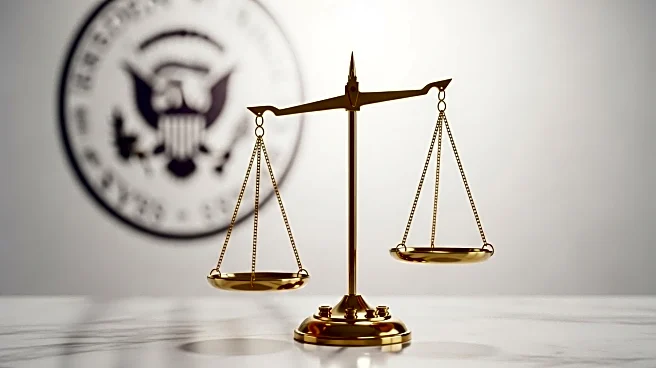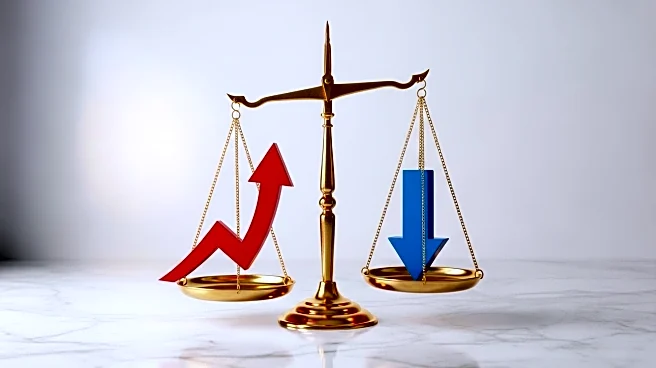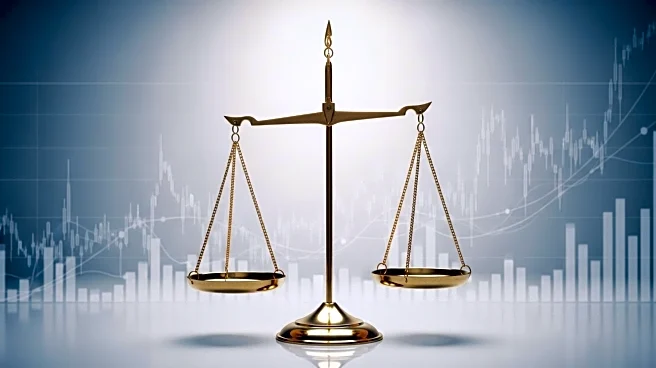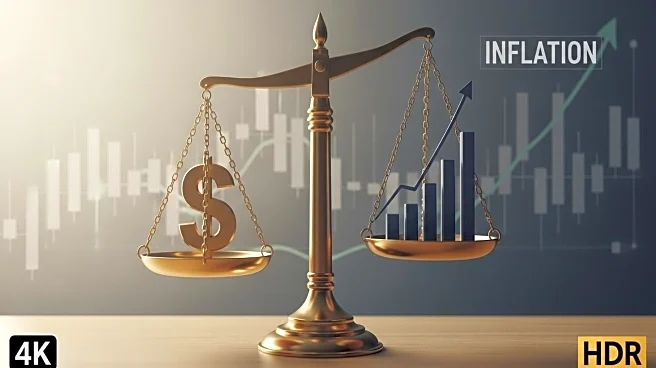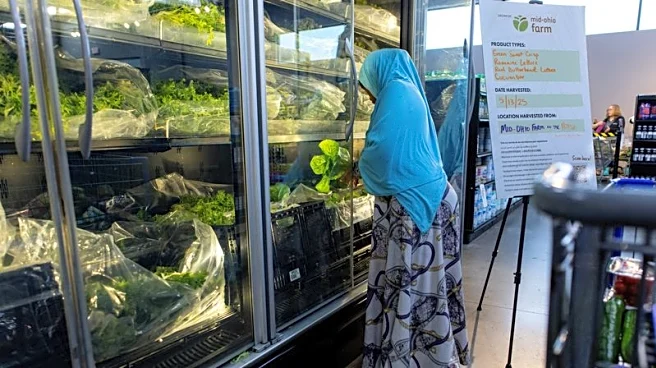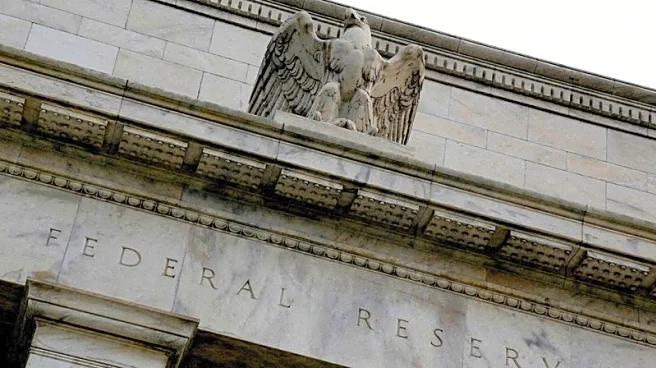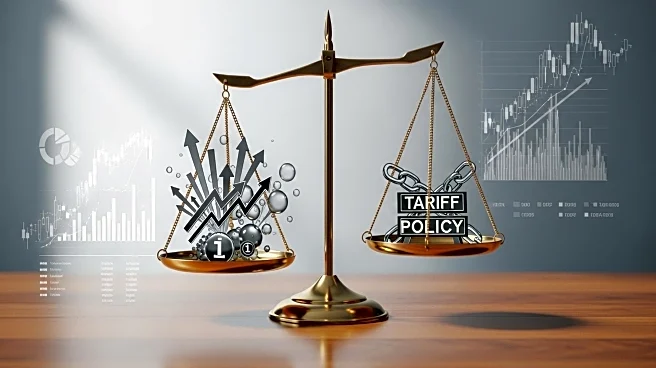What's Happening?
The US economy is showing signs of stagflation, a condition characterized by stagnant growth and rising inflation. Recent data indicates that while prices are increasing, job growth has stalled, creating uncertainty in the economic landscape. This situation is reminiscent of the 1970s oil shock crisis, which led to prolonged stagflation. Economists are attributing the current economic challenges to policies implemented by President Trump, including tariffs and immigration crackdowns. These measures have reportedly increased hiring costs and consumer prices. The Federal Reserve is considering interest rate cuts to address these issues, but the effectiveness of such measures remains uncertain.
Why It's Important?
Stagflation poses significant challenges to the US economy, as it combines the negative effects of inflation and unemployment. If the situation worsens, it could lead to increased poverty levels and economic hardship for many Americans. The tariffs imposed by President Trump are seen as a contributing factor, with consumers already absorbing a portion of these costs. The potential for stagflation could weaken the Federal Reserve's ability to balance the economy through interest rate adjustments. This scenario could have far-reaching impacts on public policy, economic stability, and the overall well-being of US citizens.
What's Next?
The Federal Reserve is expected to make a decision on interest rate cuts soon, which could influence the labor market and inflation rates. Economists are closely monitoring the situation to assess the potential for stagflation to intensify. If firms begin passing tariff costs onto consumers more aggressively, inflation could rise further, exacerbating the economic challenges. The Trump administration has urged patience, suggesting that positive job numbers may emerge in the future. However, the uncertainty surrounding these predictions leaves the economic outlook unclear.
Beyond the Headlines
The ethical implications of the current economic policies are significant, as they may disproportionately affect low-income individuals and increase poverty levels. The tariffs, described as an 'indirect tax,' could lead to a substantial rise in the number of Americans living in poverty. The administration's response to economic data, including claims of rigged statistics, adds a layer of complexity to the public's understanding of the situation. Long-term shifts in economic policy and labor market dynamics may be necessary to address these challenges effectively.
